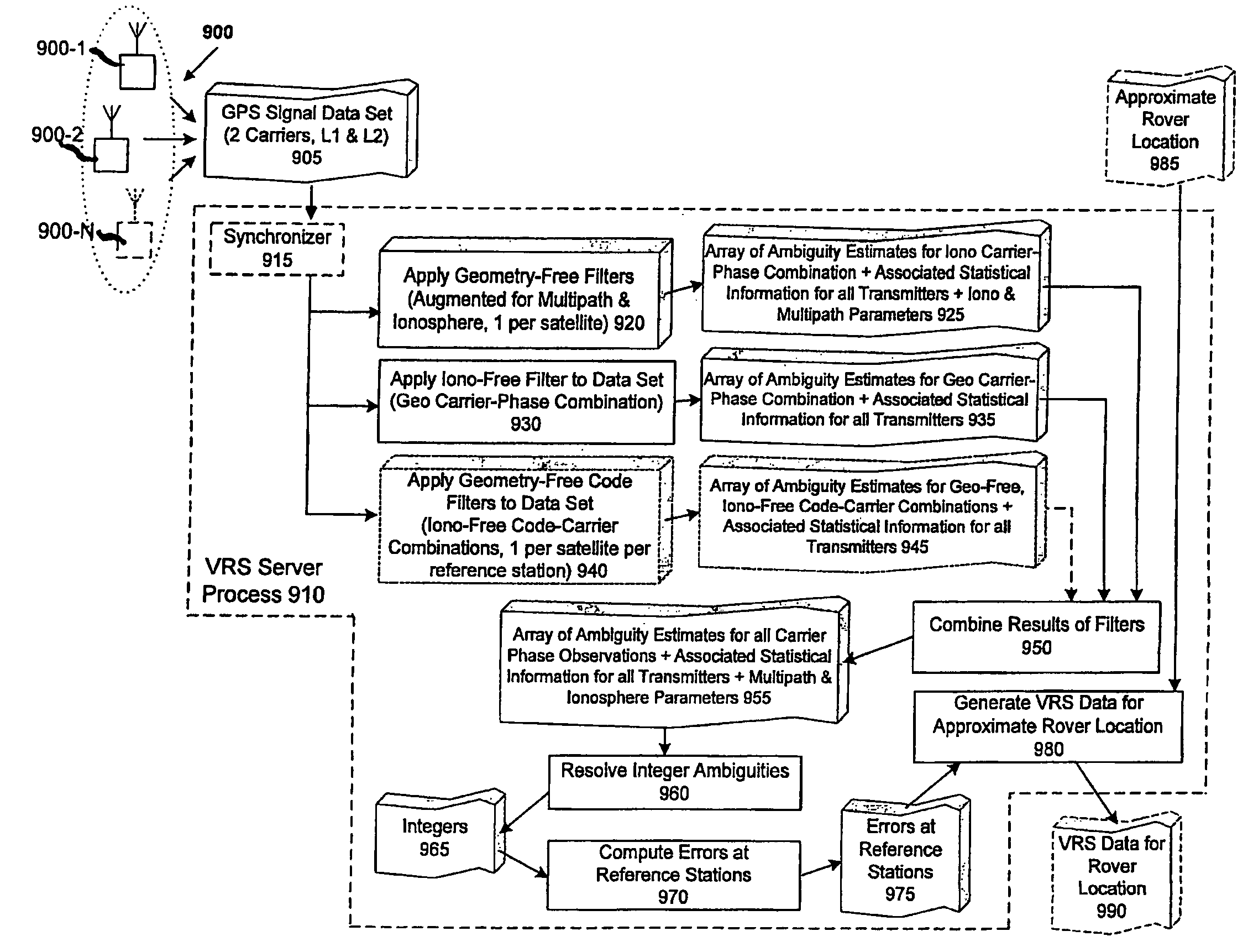Ionosphere modeling apparatus and methods
a technology of ionosphere and model, applied in the field of global navigation satellite systems, can solve the problems of not providing detailed structure to obtain differential corrections across local networks, and achieve the effects of improving error estimates, rapid convergence, and high reliability
- Summary
- Abstract
- Description
- Claims
- Application Information
AI Technical Summary
Benefits of technology
Problems solved by technology
Method used
Image
Examples
Embodiment Construction
[0043]Embodiments in accordance with the invention employ a novel approach to ionospheric modeling together with efficient algorithms that improve on prior-art models. Phase measurements of signals of at least two wavelengths, as acquired by a network of GNSS reference stations, are used in a geometry-free linear combination.
[0044]An illustrative embodiment uses the two wavelengths k1 and X2 on the respective frequency bands L1 and L2 of the current NAVSTAR Global Positioning System (GPS). However, principles of the invention can be applied to any GNSS system supplying signals on two or more frequencies, such as the Russian-deployed GLONASS system or the planned Galileo system. The model presented here is also applicable for the signals on three or more frequencies that will be supplied by the modernized GPS system and the Galileo system. For three or more carrier frequencies, a different linear combination of the phase measurements is processed in a filter equivalent to the one pre...
PUM
 Login to View More
Login to View More Abstract
Description
Claims
Application Information
 Login to View More
Login to View More - R&D
- Intellectual Property
- Life Sciences
- Materials
- Tech Scout
- Unparalleled Data Quality
- Higher Quality Content
- 60% Fewer Hallucinations
Browse by: Latest US Patents, China's latest patents, Technical Efficacy Thesaurus, Application Domain, Technology Topic, Popular Technical Reports.
© 2025 PatSnap. All rights reserved.Legal|Privacy policy|Modern Slavery Act Transparency Statement|Sitemap|About US| Contact US: help@patsnap.com



